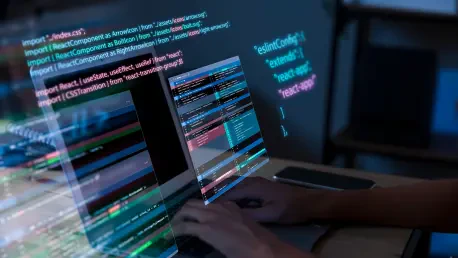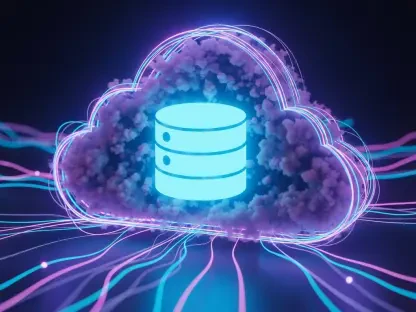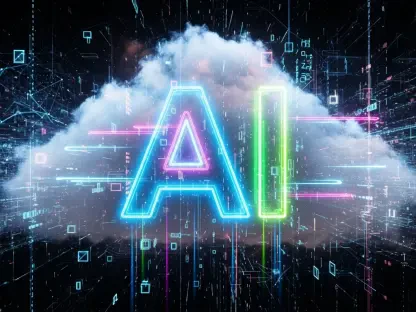Artificial Intelligence (AI) has brought significant changes to software development, massively impacting programming practices and transforming how code is created, debugged, and maintained. However, these advancements come with their unique set of challenges that must be addressed to preserve originality, adherence to intellectual property laws, and ethical standards.
The Integration of AI in Programming
Automating and Enhancing
AI tools like GitHub Copilot and ChatGPT are revolutionizing software development by automating repetitive tasks, assisting with code generation, and providing solutions for bug fixes, thereby significantly boosting productivity. These tools leverage vast datasets to learn from existing codebases and developers’ inputs, allowing them to suggest relevant code snippets that fit seamlessly into ongoing projects. This not only speeds up the coding process but also helps in reducing the occurrence of errors as these AI tools have the ability to detect and correct potential bugs in real-time.
The automation provided by AI in programming extends beyond just writing code. Machine learning algorithms embedded within these tools can analyze code quality, enforce coding standards, and recommend best practices. For instance, AI can suggest optimizations that improve a program’s efficiency or flag sections of code that might lead to bottlenecks or vulnerabilities. This level of intelligent automation empowers developers to focus on more complex and creative aspects of software development, ultimately pushing the boundaries of what can be achieved within shorter time frames.
AI as a Coding Partner
This integration places AI not as merely an assistive tool but rather as an active coding partner, helping developers achieve more in less time and enabling them to focus on more complex problems. AI’s role as a coding partner involves its ability to offer insights that human developers might overlook. For example, when faced with a challenging coding problem, AI can cross-reference different solutions applied in various contexts, synthesizing a new approach that takes the best components from each.
Developers can leverage AI to perform exploratory tasks that would be time-consuming and error-prone if done manually. Tasks like identifying dependencies in large codebases, refactoring outdated code, and porting applications to new environments can be streamlined with AI assistance. This symbiotic relationship between human developers and AI ultimately leads to more robust and innovative solutions, fostering an environment where technology continuously evolves with minimal friction.
Challenges and Concerns
Plagiarism and Originality
One major concern is that AI-generated code could inadvertently replicate copyrighted or licensed code snippets from its training data, leading to issues of plagiarism and intellectual property infringement. Given the extensive datasets used to train AI models, these tools might inadvertently reproduce parts of code that were intended to be unique or proprietary. This raises critical questions about ownership and originality, especially when code segments are reused without appropriate attribution.
Such scenarios could have significant legal implications, where companies or developers might find themselves in violation of copyright laws without realizing it. The replication of protected code could lead to costly lawsuits and damage reputations within the software development industry. Protecting intellectual property in this rapidly evolving landscape necessitates robust verification mechanisms to ascertain the originality of AI-generated code, ensuring that developers and organizations do not inadvertently cross ethical or legal boundaries.
Understanding and Security Risks
There is also a risk that developers might over-rely on AI-generated code, using snippets without fully understanding them, which could introduce security vulnerabilities and performance issues in the software. As AI tools continue to simplify complex coding tasks, there is a temptation for developers to integrate suggested code without thorough vetting. This reliance could obscure deep-seated issues that only become apparent once the software is deployed, leading to potential exploitation by malicious actors.
Understanding the code thoroughly is essential not only for performance optimization but also for maintaining security standards. Ignorance of the underlying logic behind AI-generated code increases the risk of security loopholes that could be exploited, compromising the integrity of the entire application. Developers must balance the convenience provided by AI with diligent scrutiny to ensure that the code integrated into their projects upholds the highest standards of reliability and security.
The Legal and Ethical Considerations
Legal Risks for Organizations
Organizations face the risk of unintentionally using AI-generated code that might conflict with licenses or violate intellectual property laws, potentially leading to costly legal entanglements. Compliance with software licenses and intellectual property laws becomes increasingly complex as AI tools draw from vast, often public, repositories of code. Companies must implement rigorous vetting processes to ensure that the code incorporated into their products does not violate any legal agreements or ownership rights.
The use of AI-generated code without proper verification mechanisms opens organizations to the threat of litigation, which can result in significant financial losses and damage to their brand’s reputation. It is vital for companies integrating AI tools in their development processes to establish comprehensive guidelines and legal reviews to navigate the intricate landscape of software licenses and intellectual property. Ensuring that the source of every code snippet is traceable and verifiable becomes crucial in mitigating these legal risks and maintaining corporate integrity.
Academic Integrity
In educational settings, there is a concern that students might misuse AI tools to complete assignments, undermining the learning process and academic integrity. The availability of AI coding assistants poses a challenge for educators who must differentiate between a student’s genuine effort and the output generated by AI. This misuse can lead to a hollow understanding of programming principles, as the foundational skills are not thoroughly developed through practice and problem-solving.
Academic institutions must evolve their evaluation methods to account for the capabilities of AI tools, ensuring that students are assessed based on their understanding and application of coding concepts rather than their ability to leverage technology. Ensuring academic integrity involves fostering a culture where the ethical use of AI is encouraged and students appreciate the value of mastering coding skills independently. This necessitates clear guidelines on the acceptable use of AI in academic settings and the development of tools that can detect AI-assisted work.
The Role of AI Detection Tools
Importance Across Industries
AI detection tools are becoming essential across various industries to identify AI-generated code, ensuring originality and compliance with legal and ethical standards. These tools play a pivotal role in maintaining the integrity of software development practices by scrutinizing the origin of code snippets to verify their originality. They assist in identifying AI-generated content, thus helping programmers, organizations, and educational institutions uphold the standards required to navigate this advanced technological landscape responsibly.
AI detection tools can be employed across diverse sectors, from software companies that need to audit their codebases to ensure compliance, to educational institutions aiming to uphold academic integrity, and even open-source communities verifying contributions. By providing a transparent mechanism to distinguish human-written code from AI-generated content, these tools support a fair and legally compliant development environment, reducing the risk of plagiarism and intellectual property violations while fostering ethical coding practices.
Introducing CodeSpy.ai
CodeSpy.ai emerges as a sophisticated tool designed for precisely detecting AI-generated source code. It offers numerous features and supports a wide range of programming languages. CodeSpy.ai utilizes advanced machine learning models to identify the nuances of AI-generated code, enabling it to provide highly accurate detection results. This level of precision is vital for industries where the delineation between human and AI input is critical for maintaining the integrity and originality of software products.
Offering broad language support, CodeSpy.ai caters to various programming environments, making it a versatile tool for developers working with different coding languages. Its adaptability extends beyond language compatibility to include the ability to integrate with existing development workflows seamlessly. By supporting a diverse range of programming languages, CodeSpy.ai ensures that it meets the needs of a wide user base, from individual developers to large enterprises, thereby reinforcing the importance of maintaining originality and adherence to legal and ethical standards.
Key Features of CodeSpy.ai
Precision and Accuracy
CodeSpy.ai utilizes advanced machine learning models to differentiate between human-written and AI-generated code, providing confidence scores for probabilistic insights. The tool’s precision in identifying the source of code significantly reduces the likelihood of false positives, ensuring developers and organizations can trust its assessments. This feature is particularly valuable in environments where the accuracy of code attribution is crucial, such as in legal compliance audits or during academic evaluations.
The confidence scores generated by CodeSpy.ai provide users with a probabilistic measure of the likelihood that a particular code snippet was generated by AI. This nuanced insight allows for informed decision-making, enabling users to take appropriate actions based on the detected probabilities. For instance, a high confidence score might warrant a thorough review of the code snippet in question, while a lower score might suggest that further verification is necessary. This structured approach ensures that users can effectively manage and mitigate the risks associated with AI-generated code.
Comprehensive Support and Utility
Supporting multiple programming languages, CodeSpy.ai is versatile and beneficial for developers, educators, and enterprises to audit code for compliance with internal policies and intellectual property laws. The tool’s comprehensive language support makes it adaptable to various development environments, providing consistent and reliable code analysis across different coding standards and practices. This versatility ensures that CodeSpy.ai remains a valuable asset for a wide range of applications, accommodating the diverse needs of the software development community.
CodeSpy.ai’s utility extends to educational institutions where it assists educators in maintaining academic integrity by verifying the originality of student submissions. By comparing code submissions against a database of known AI-generated content, the tool helps identify potential misuse of AI tools in academic work. For enterprises, CodeSpy.ai simplifies the auditing process, ensuring that all code integrated into their products complies with internal policies and external legal requirements. This dual functionality underscores the tool’s importance in fostering ethical and legally compliant coding practices.
Privacy and Confidentiality
Artificial Intelligence (AI) has revolutionized software development, significantly impacting programming practices and transforming how code is created, debugged, and maintained. AI tools can automate parts of coding, identify bugs faster than traditional methods, and even suggest enhancements, streamlining the development process. However, this technological leap introduces several challenges that developers must navigate. Ensuring originality becomes tricky when AI systems can generate code that closely resembles existing templates. Intellectual property laws also get complicated, as determining ownership and originality of AI-generated code can be murky. Furthermore, ethical standards must be rigorously maintained. Developers need to ensure that AI does not inadvertently perpetuate biases or violate user privacy. Addressing these challenges is crucial for the responsible use of AI in software development. The balance between leveraging AI for efficiency and upholding ethical integrity requires ongoing vigilance and robust frameworks to protect both innovators and users.









